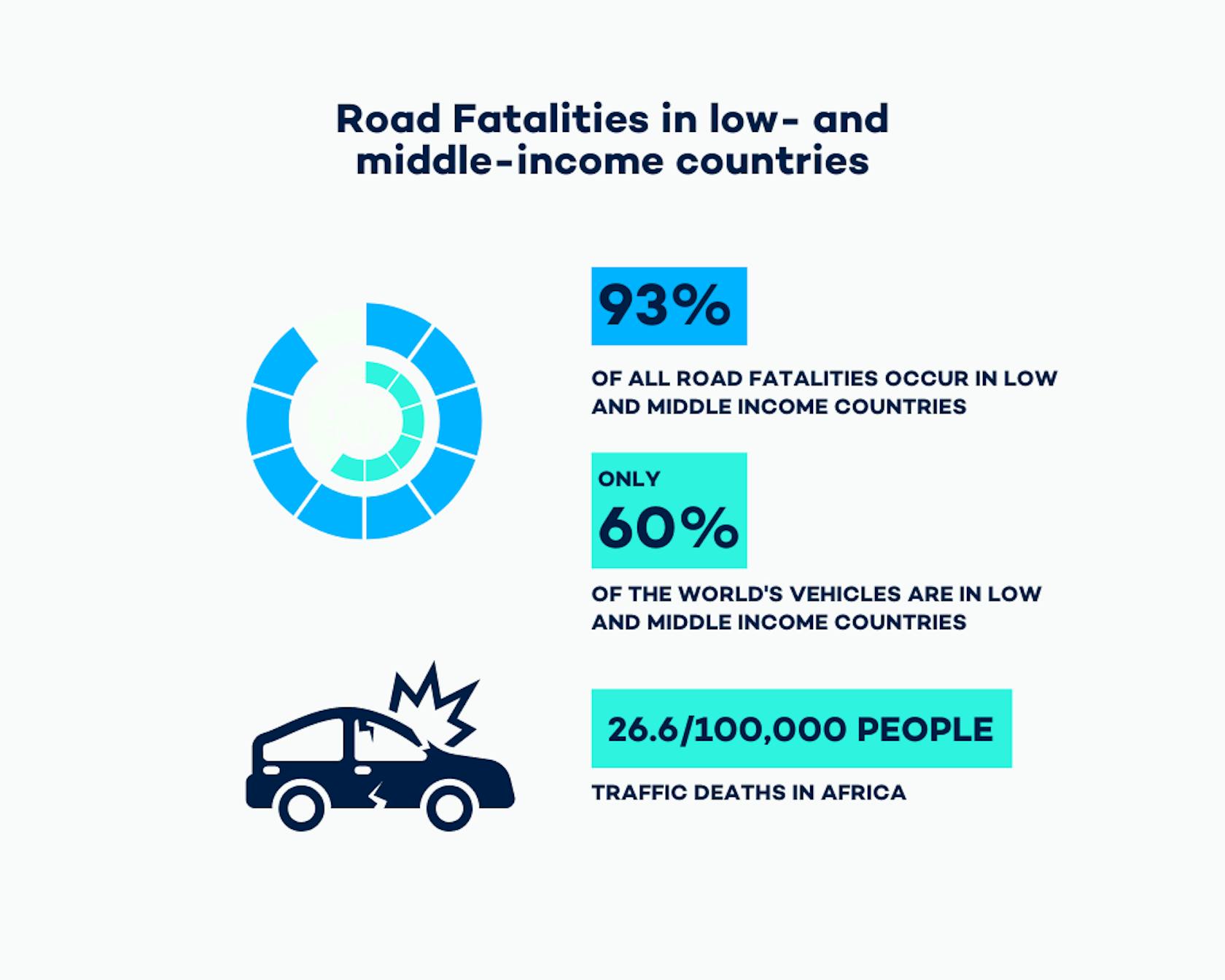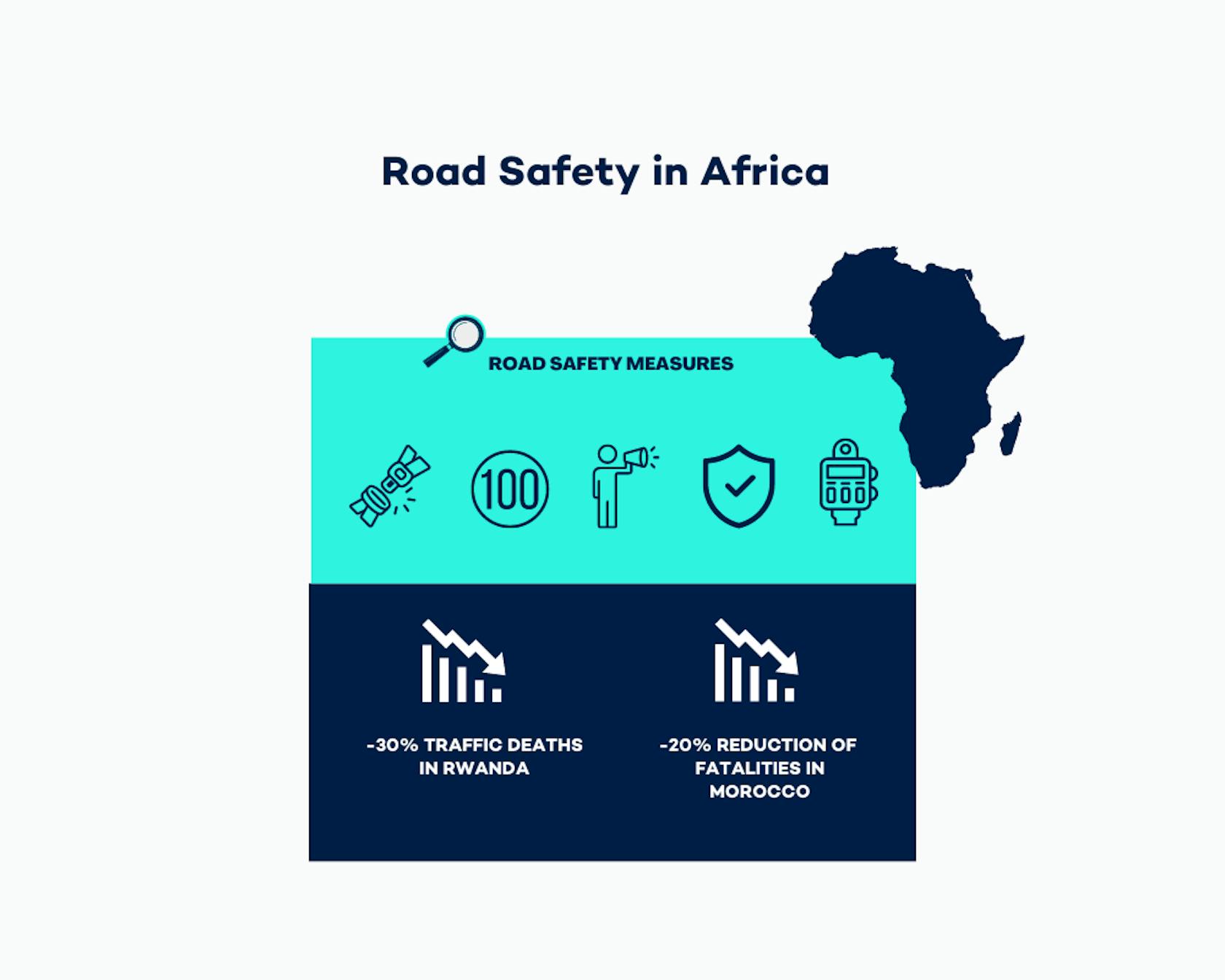

Road Safety on the Rise in Africa
A new century on the continent with VITRONIC
After Africa has been one of the most dangerous continents for road users for decades, new initiatives emerge in many African countries to improve road safety for all road users – and VITRONIC systems play a huge part in it.
Road Fatalities in Africa – A history in brief
Until today, 93% of all fatalities on the roads occur in low- and middle-income countries, even though these countries account only for about 60% of the world's vehicles. This phenomenon has been crucial for Africa for a long time. While it is often not possible to find reliable data on the actual number of traffic fatalities and traffic related deaths for some countries, studies show that the number of traffic injuries and deaths has been increasing for over three decades.
Africa has the highest rate of traffic related deaths worldwide (26.6/100,000 people), only followed by South-East Asia (20.7/100,000 people).
However, over the last decades many countries have established individual agendas to tackle the issues of traffic safety, as well as shared charters to establish a safer road environment in Africa. (WHO, 2021)
Road Safety in Rwanda – A success story with VITRONIC
Back in the year of 1996, Rwanda had been found to have one of the worst road-safety records in the world by a World Bank situation report, after overcoming the horrific 1994 genocide in the country. Following this report, which found that every two and a half hours an accident occurred on Rwanda’s roads, the Rwandan government took action against road fatalities. The initiative launched was a response to the humanitarian crisis, providing the country an improved infrastructure and more road safety to overcome the trauma of the genocide.
With the introduction and enforcement of new regulations in 2001, including the use of seatbelts, speed limits, vehicle inspections and many other measurements, the actions started to affect the safety on the roads. In the following years, the government of Rwanda also conducted a public awareness campaign, including the education of children in schools. The results reached with this ambitious initiative showed the effectiveness of these measures: Under the new law, the number of traffic deaths dropped significantly by 30%. Especially the speed limits and enforcement have been found to be effective measures in the reduction of traffic deaths.
In only ten years, Rwanda managed to evolve from one of the world’s most dangerous countries for road users in 1996, to a bright example on how African countries can effectively improve road safety in 2006. Until today, Rwanda remains to be one of the most ambitious African countries when it comes to road safety and still manages to decrease the number of road accidents almost every year.The most recent action taken with regards to improved road safety is the installation of over 500 VITRONIC traffic enforcement systems all over the country, with the target of reducing road accidents by 80%.
To ensure flexible application, the country will use mobile and fixed systems, Enforcement Trailers to and Enforcement Bars to monitor speed and traffic violations. The partnership emerged form Rwanda’s government, which set the goal of developing sustainable road safety measures and create awareness for road users. Overall, the measures are aimed to reduce the number of road accidents significantly and have already had a huge impact on road safety in Rwanda.
VITRONIC in Morocco
Another example of an ambitious road safety initiative is Morocco. The north African country also has a partnership with VITRONIC which includes several hundred systems and a designated service hub to support the activities in the country.
These measures correspond to the national road safety strategy for the period of 2017 to 2026, which was established by the Moroccan government. As an important part of the national strategy for improved road safety, VITRONIC installed both, fixed and mobile enforcement systems in the country. Despite the increasing number of registered vehicles in Morocco over the last two decades, fatalities have decreased by 20% since the implementation of the road safety strategy and the installation of enforcement systems over the last decade. Even though vehicle registrations have increased by over 180%, road fatalities and injuries continue to decrease with the measures taken by the government.
More countries set the focus on Road Safety
Rwanda is not the only country that sets the focus on improving road safety. Over 1,000 VITRONIC traffic enforcement systems are already on the African continent and it’s becoming more and more every day! Seven African countries have already decided to use VITRONIC systems to support the development to safer roads in Africa and more countries are in talks to start similar initiatives with the German company.
The footprint of these traffic enforcement systems is already big on the continent; however, it is growing and contributes to the reduction of traffic fatalities and to creating improved road safety for all.
Conclusions
While Africa remains to have high traffic related death rates, the African Union and many individual countries are striving to improve road safety. A key component of every strategy remains to be traffic enforcement, which is an effective measure against the main causes of traffic fatalities. Studies show that traffic enforcement will be a gamechanger in battling the main reasons for traffic related deaths and indicate investment potential and need for both, countries, and investors.
Overall, the cases described above can be taken as good examples of how African countries can tackle the issue of road safety. Even though there are still many issues in terms of road safety on the continent, countries are showing remarkable success in reducing accidents and fatalities and manage to reach levels of Western countries.
In conclusion, African states can be seen as a blueprint for cities and states all over the world. Even though technology is developing fast and offers a wide variety of options, even the smallest measures can make a huge difference for people’s lives.





